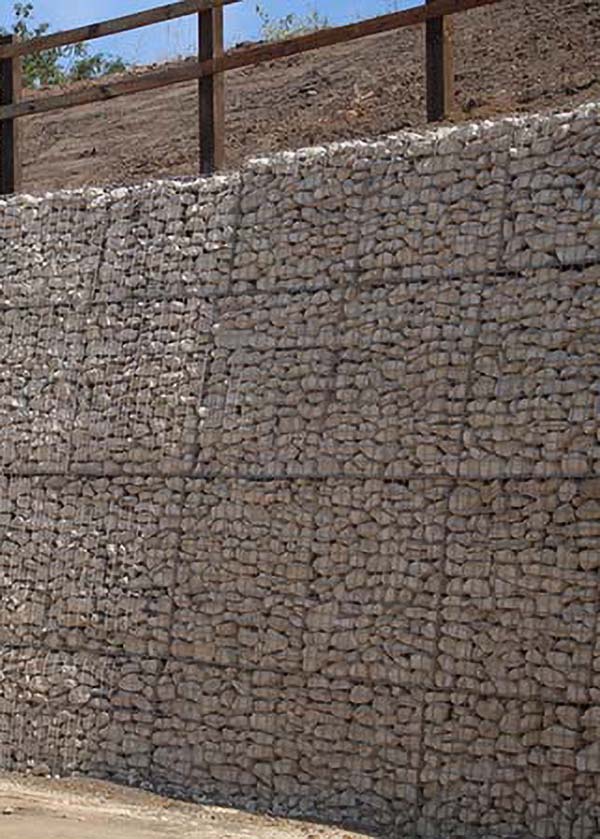Gabion Mesh Retaining Walls
Request A Free Quote!
Gabion Mesh Retaining Walls
Gabion is derived from the Italian word for “cage” and is a wire container that can hold any sort of inorganic material. They can form flexible, permeable structures that work well in stabilizing shorelines against erosion. Gabion walls can be used in landscapes as retaining walls, decorative site walls, seating walls, accent walls and more.
Gabion walls are built mainly in the purpose of soil stabilization behind the wall, but can also be built as a cover wall. The wall is made from gabion baskets that are stacked in one or more rows, depending on the height of the wall. The baskets have a cage shape and are closed on all sides. They are made from galvanized hexagonal meshes and broken rock that are placed in the baskets. Retaining structures are formed by stacking gabion baskets and are an alternative solution for concrete structures for soil stabilization.
Gabion walls are mostly used in road construction, embankments, slope protection, water barriers and can have different functions:
- Creation of a barrier that prevents soil erosion in coast and embankment stabilization
- Prevention of sliding and washouts
- Water speed reduction in prevention of soil erosion in water ways
- Noise protection
- Aesthetic fence structures for gardens

Benefits of gabion walls:
- Aesthetic – gabion walls look natural and by using natural materials fit naturally into the environment
- Compatibility with the environment – using the material made by excavations the costs of acquisition and transport are significantly reduced
- Is used as a cooling system in hot climate conditions and provides passive cooling by air movement
- Water permeability – gabion walls are permeable and are not damaged by passing water
- Efficiency of gabion walls can increase in time, since the vegetation fills voids and strengthens the wall structure
- Soil movements don’t negatively influence gabion walls, which is an advantage in regard to stiffer structures (reinforced concrete walls)
- Longevity – stone blocks are materials that are frequently used because of their longevity, durability and stability. Usually the stone is selected because of aesthetic attributes or the possibility of excavation produced material usage.
Frequently Asked Questions
Gabion Retaining Wall FAQs
The standard design for a gabion wall is a pyramid. In general, for every 1m increase in wall height, the bottom row basket depth should be increased by half a metre. For a 2m high wall the bottom row should be 1.5m deep and the top row should be 1m deep. It is still standard to use 3mm wire thickness for both rows.
Gabion structures, whether walls or fences, do not need a concrete foundation. However, they do need some work under the surface. Otherwise, as heavy as they are, they would be easy to topple over. … Unlike many other walls, Gabion does not require a concrete foundation
